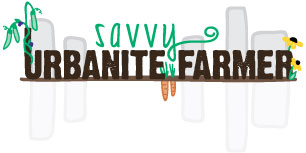While weren’t on the topic of grasses, let’s take a look at the prairie ecosystem — and talk about how you might be able to make one on your patio or in your backyard.
What is a prairie?
A prairie is a grassland ecosystem, and they can be found all over the world. To go with their widespread style, there are also three types of prairies: wet, mesic, and dry; depending on how much standing water they have. The ephemeral beauty of prairies need to be seen to be able to be appreciated. David Attenborough, BBC producer and naturalist, shows us how South Africa is transformed with the prairie in Planet Earth, Episode 7, as shown below.
Wet prairies
Wet prairies are characterised by having quite a bit of standing water, deep clay silt loam or peat soil, poor drainage. The main difference between a wet prairie and a marsh is that the water is mostly temporary as well as confined to low areas. The plant types within a wet prairie vary from continent to continent with the local plant species, but you can rest assured they have grasses, some wildflowers, and a large variety of wildlife and insects. In North America two common plants are also marsh milkweed and prairie cordgrass. While I’m not sure, I think their cousins may be prevalent on other continents in the same conditions as well.
Mesic prairies
 Mesic means to contain a moderate amount of moisture, so a mesic prairie contains less water than a wet prairie, but more water than a dry one. This is the most common prairie. You can characterise the soil as medium-deep silt or sandy loam soil, good drainage. As for plants? Think tall grasses such as big bluestem (left) and Indian grass. You may also find rosinweed and yellow coneflower — which by the end of summer can reach up to 6 feet high — in North American mesic prairies.
Mesic means to contain a moderate amount of moisture, so a mesic prairie contains less water than a wet prairie, but more water than a dry one. This is the most common prairie. You can characterise the soil as medium-deep silt or sandy loam soil, good drainage. As for plants? Think tall grasses such as big bluestem (left) and Indian grass. You may also find rosinweed and yellow coneflower — which by the end of summer can reach up to 6 feet high — in North American mesic prairies.
Dry prairies
Can you guess where we’re going with this one?
Dry prairies are characterised by having little water with dry, shallow soil over sand or limestone. A fun fact is that when these dry prairies are found on steep slopes, they are often called goat prairies as well. You’ll still find lots of grasses, but add in little bluestem, sideoats grama, and other wildflowers for a delicately balanced ecosystem.
The role of fire
A prairie’s best friend is fire. Fire burns through a prairie land hot and quick, burning encroaching shrubs and trees. All prairie plants have evolved a protection from this by having buds at or below the soil surface and a lot of root mass below ground. Without this interplay between naturally occurring wildfire and the evolution of buds under the ground, prairies would slowly be taken over by trees and shrubs and turned into a woodland ecosystem.
Can you recreate the beauty and wonder of a prairie in suburbia? If you have the right soil and moisture conditions, you bet you can!
How you can create a mini one in your backyard
Featured image from Prairie Haven, a scientific blog and exploration in land reclamation.

